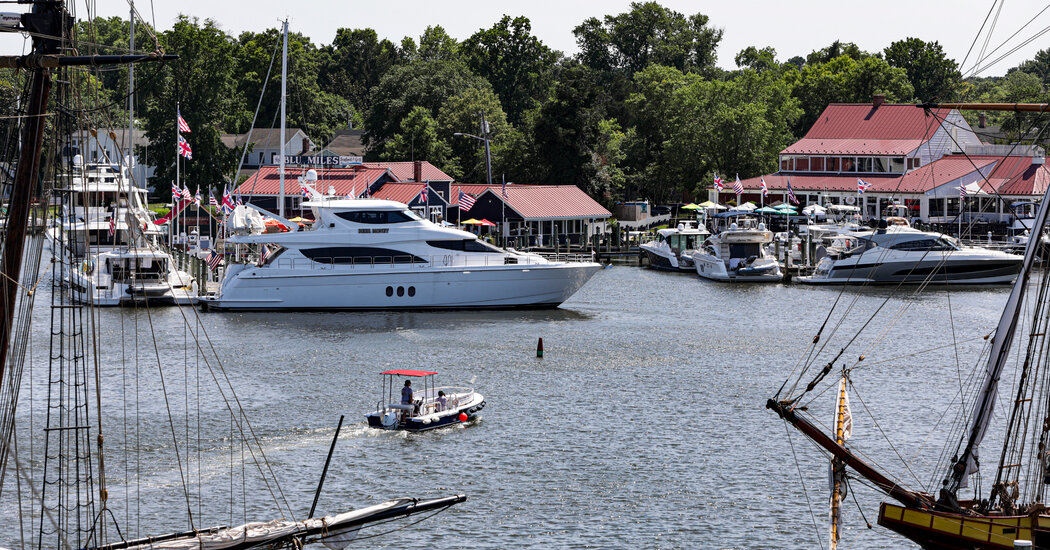With Memorial Day weekend upon me, I packed a bag and drove east, following a 80-mile path trodden for decades by fellow Washington residents looking for calmer seasonal destinations. After crossing the Chesapeake Bay Bridge and heading south on windy back roads, I finally stepped out in St. Michaels, Md., a waterfront destination often celebrated as one of the crown jewels of Maryland’s Eastern Shore.
Tucked away in the brackish wetlands of the Chesapeake Bay, the town of St. Michaels preserves the scenery of its 19th-century past, when the shipbuilding industry was dominant and oyster and crab harvests flowed plentifully from its docks, producing small fortunes for local merchants.
Today, its transformation into a resort town is all but complete, but the lasting imprint of its maritime roots and touches of affluence from its heyday have helped it stand out even in a part of Maryland abundant in small towns that evoke the United States’ early years. Over a short three days, I came across a trove of early American architecture and a wealth of opportunities to explore the Chesapeake landscape by land and by water.
My first night, I arrived on St. Michaels’ short main street hungry for dinner, and found most of the restaurants in town tended to be bistros, steakhouses, and seafood-focused bar-and-grills. A good showcase of Chesapeake Bay seafood — fresh oysters, soft-shell crab and blackened rockfish — was already drawing crowds to favorite spots like The Crab Claw and Awful Arthur’s. But in the end, I set my sights on Ruse, a vibrant, fresh venue that opened in 2021, during the pandemic, and operates out of the town’s uncharacteristically modern Wildset Hotel.
Rather than the classic Maryland crab cakes that are ubiquitous in the area, I indulged in blue crab rangoon, made with a light granular ricotta instead of cream cheese and subtle, sweet crab meat. For another twist on local fare, I tried Ruse’s bright and citrusy scallop ceviche, which came served on a tostada shell instead of the traditional half shell.
Many of the more stately mansions around town now operate as bed-and-breakfasts, and as dusk fell, I headed to the George Brooks House, a manor from the Civil-War era on a quiet eight-acre plot. I set my things down on the ornate four-poster bed facing a fireplace in my room and stepped out through a private side door onto the house’s rear veranda to take in the golden-hour lighting as it hit the back garden and pool.
The next…
Click Here to Read the Full Original Article at NYT > Travel…
